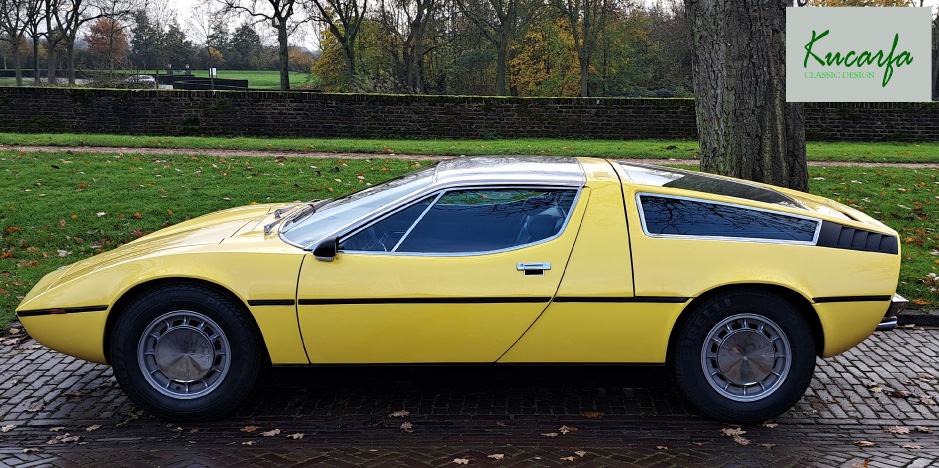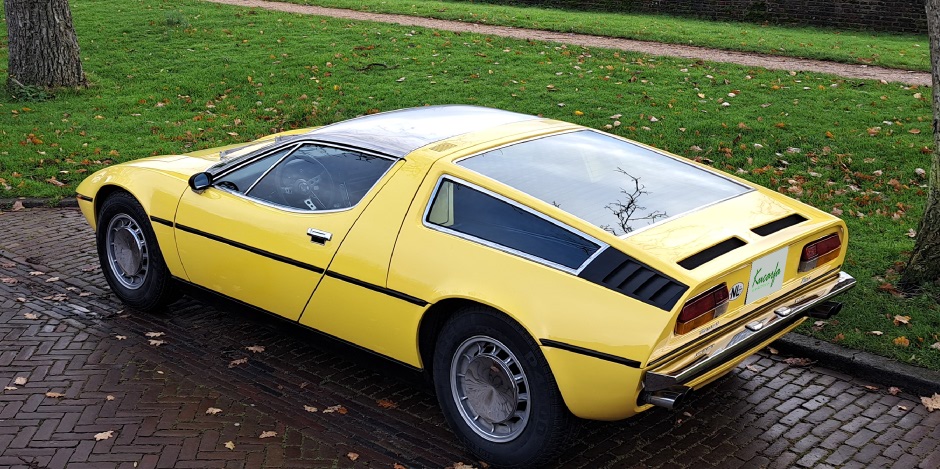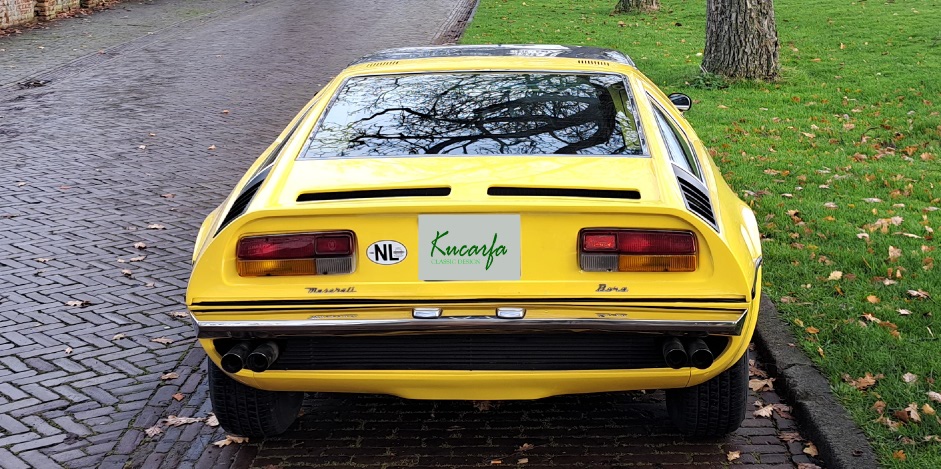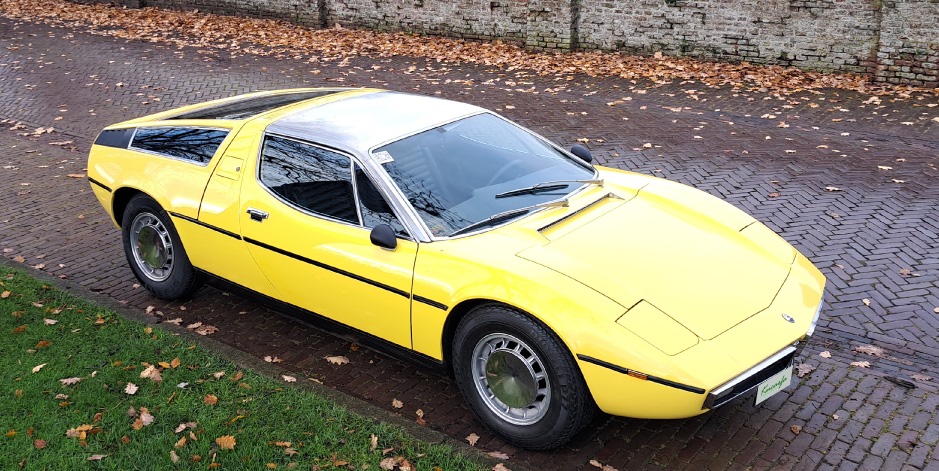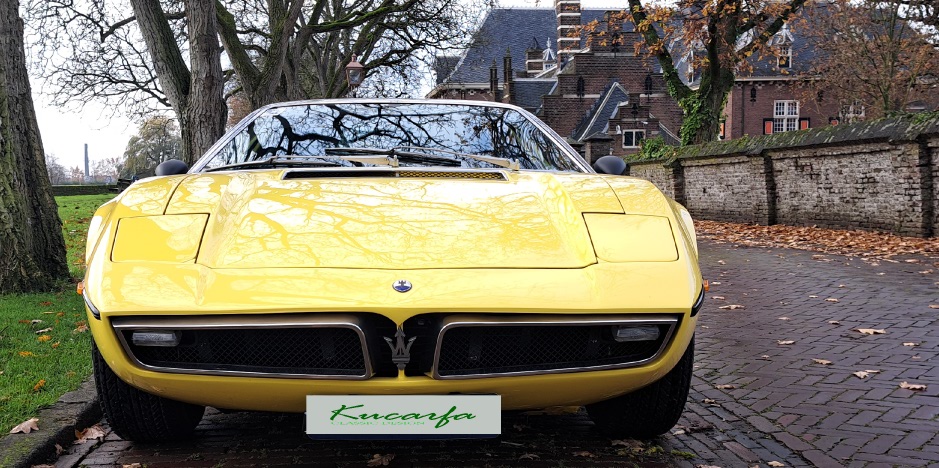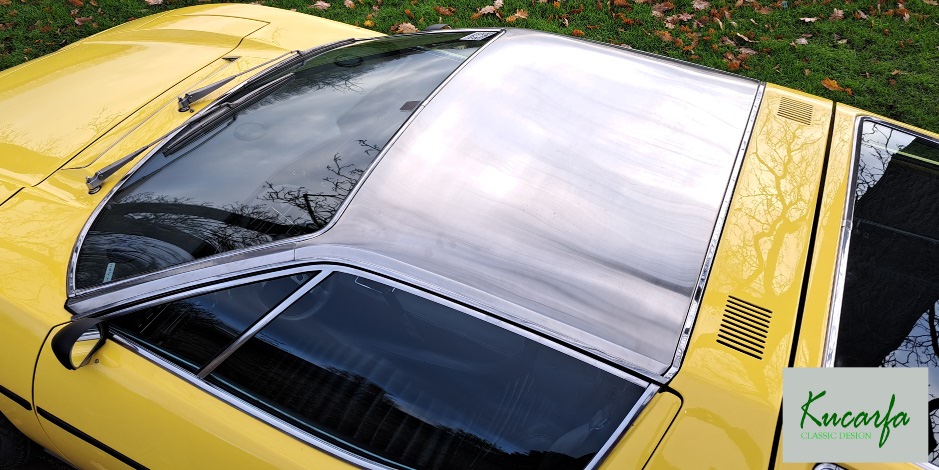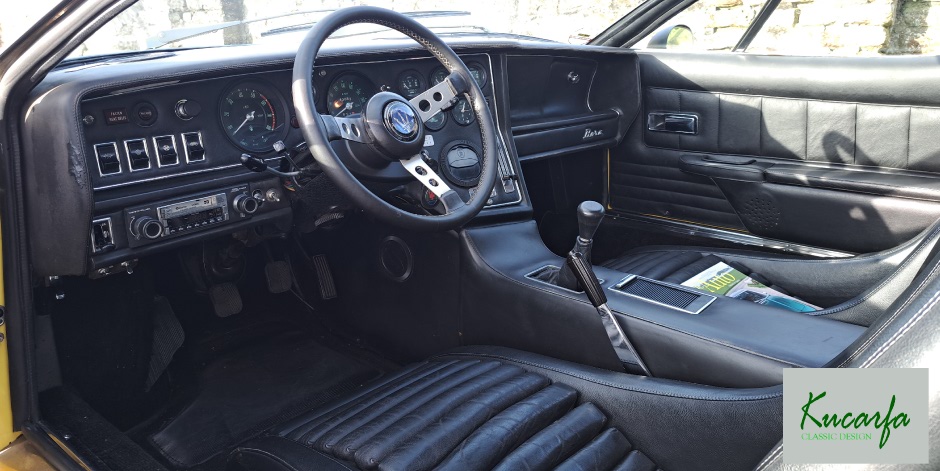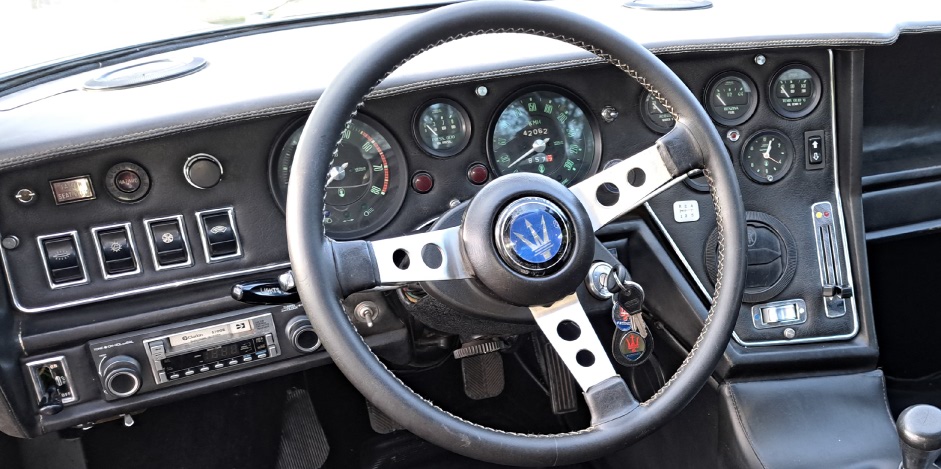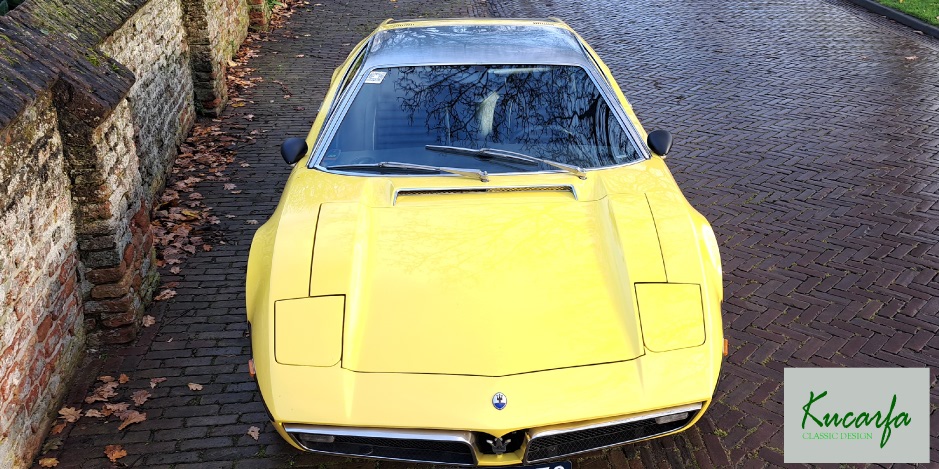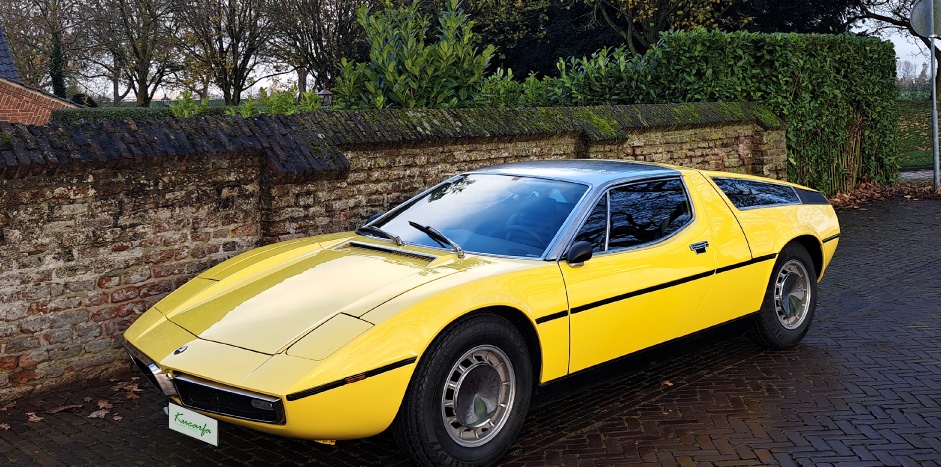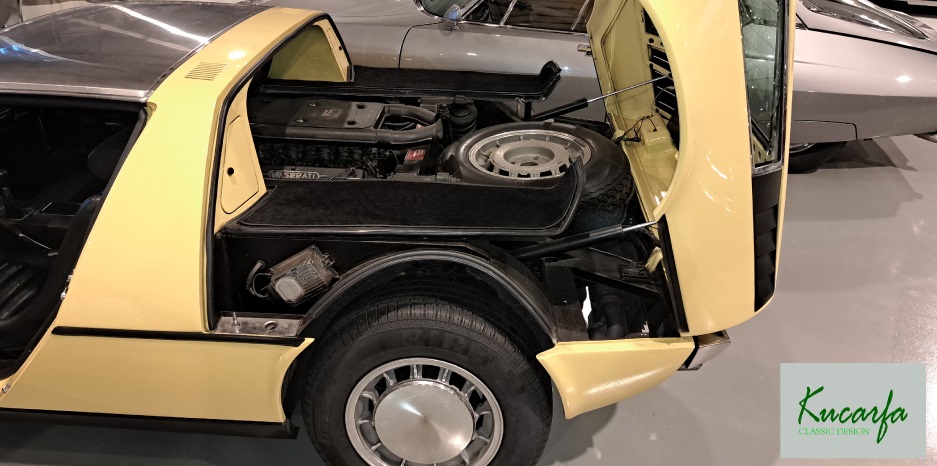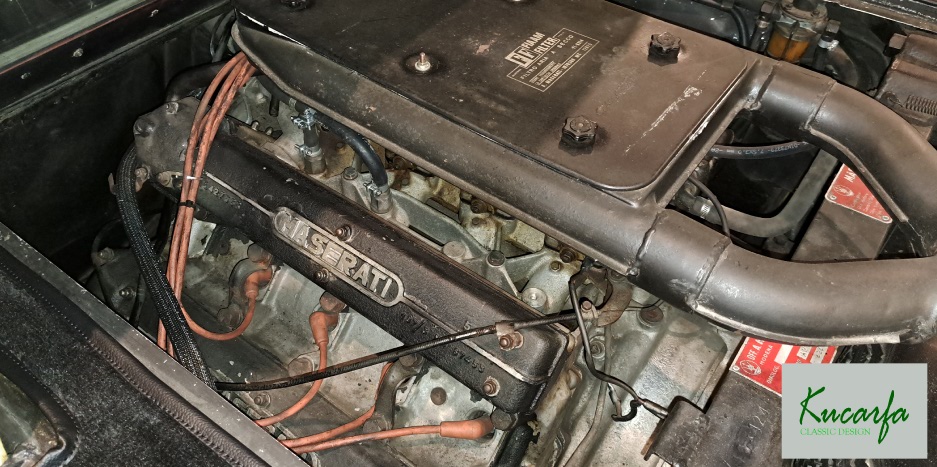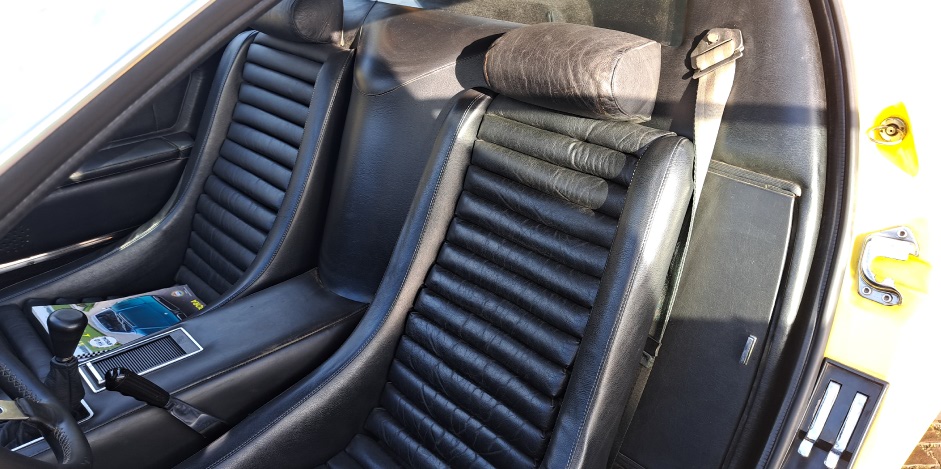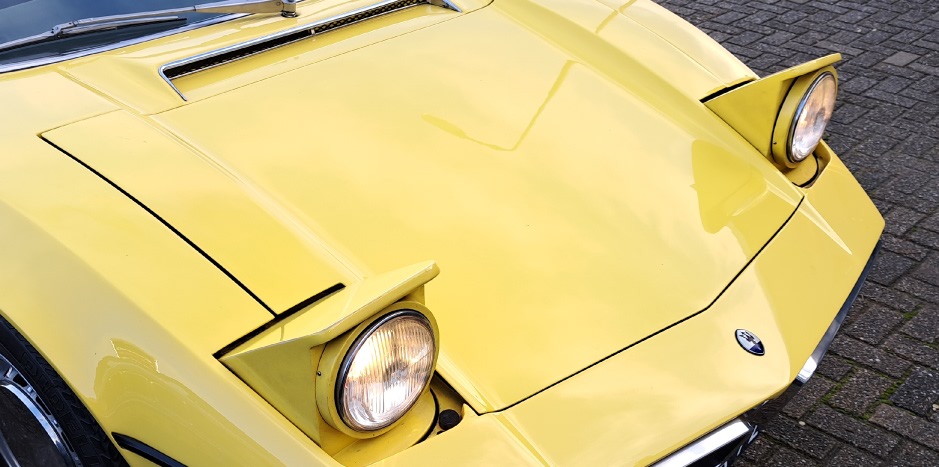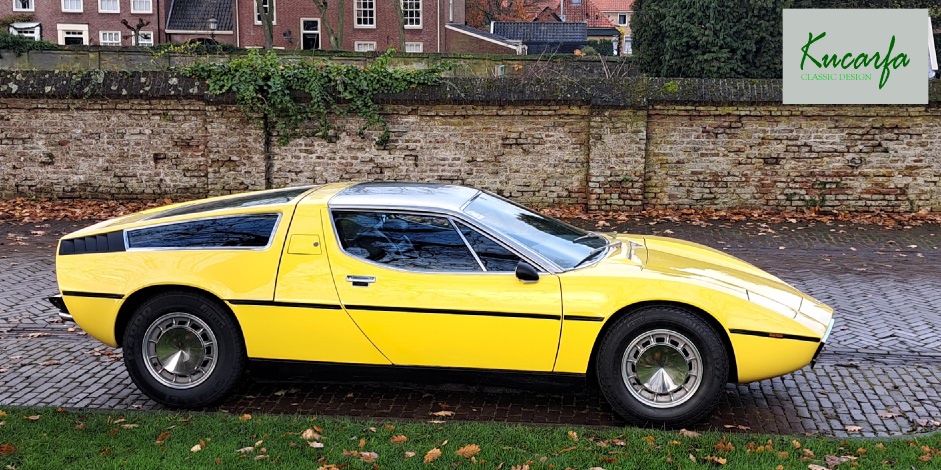The Maserati Bora (Tipo AM117) is a two-seat, rear mid-engine, rear-wheel drive sports car and grand tourer, manufactured by Maserati from 1971 to 1978. In common with other Maserati cars of the era, it is named after a wind, Bora being the wind of Trieste. The Bora was the company's first mid-engined street car and ended Maserati's reputation for producing fast but technologically out of date cars, also being the first Maserati with four wheel independent suspension. In contrast, competitor Lamborghini had first used full independent suspension in 1964.
Shortly after Citroën took a controlling interest in Maserati in 1968, the concept of a mid-engined two-seat sports car was proposed. Lamborghini and De Tomaso already had the Miura and Mangusta, whilst Ferrari were known to be developing their own mid-engined contender. Initially known as Tipo 117 and later the Bora, the Maserati project got underway in October 1968 and a prototype was on the road by mid-1969. Shown in its final form at the Geneva Salon in March 1971, deliveries began before the end of the year. Maserati struggled after being bought by De Tomaso in 1975, and the Bora was discontinued during 1978. 564 Boras were produced in total, of which 275 were fitted with 4.9-litre engines and the other 289 were fitted with 4.7-litre engines.
The Bora provided the basis for the Merak, which used the same bodyshell front clip but in a 2+2 configuration, made possible by using a smaller, lighter and less powerful Maserati V6 engine, also used in the Citroën SM. The Merak was popular, including the later modified and improved Merak SS which made its debut in 1981. Merak models had an opened rear engine-cover instead of the glass-enclosed and heavier cover of the Bora.
The Bora was designed by Giorgetto Giugiaro at Italdesign in the late 1960s, and came to market in 1971, sporting a drag coefficient of just 0.30, a value that would still be called very aerodynamic, a decade later. Fabrication of the all-steel panels was contracted to Officine Padane of Modena.
Most supercars offer little foot room and little to no provision for luggage, but the Bora has a full-size trunk in the front of the vehicle, and was otherwise known as being much more civilized in comforts from its competitors. Unlike its competitors, the Bora used dual-pane insulative glazing separating its cabin from the engine compartment, as well as a carpeted aluminium engine cap, greatly decreasing the powertrain's transmission of noise, harshness an vibration to the cabin, and increasing the comfort level for the driver. The engine and five-speed ZF transaxle were mounted on a subframe attached to the floor pan via four flexible mounts, which also helped the ride quality.
The most distinctive details of the Bora were the brushed stainless steel roof and windscreen pillars. Inside, the bucket seats, dash, door trim, centre console and rear bulkhead were trimmed in leather, with electric windows and air conditioning as standard. The steering column was manually adjustable for rake and reach. The auxiliary hydraulic circuit system controls adjusted the driver's seat vertically, the pedal box (consisting of the brake, clutch and throttle pedals) can be set horizontally forwards and backwards by around 76 mm (3.0 in) – a first such application in the world for a production car, and also to raise and lower the concealed headlights in the front fenders.
Citroën's advanced high-pressure LHM hydraulic technology was adapted into two circuit systems: main and auxiliary. The main controls the ventilated disc brakes while the auxiliary operates the horizontal and vertical movements of the pedal box (clutch, brake, and throttle), the vertical adjustments of the driver's seat, and the raising and lowering of the retractable headlights.[6] Wheels were 7.5 in × 15 in (190.5 mm × 381.0 mm) Campagnolo light alloy type with distinctive removable polished stainless steel hubcaps in the earlier models.
This Bora 4.9 in Giallo yellow is from 1973. It was imported to the Netherlands in 1998. He is one of the 14 registered Boras in the Netherlands.
Technical data
|
Maserati Bora 4.9
|
|
| Year |
1973
|
| Engine |
Maserati V8
|
| Displacement |
4.930 cc
|
| Traction |
rear-wheel drive
|
| Gearbox |
5-speed manuel
|
| Max. Power |
320 pk by 5500 rpm
|
| Torque |
454 Nm by 4000 rpm
|
| Top speed |
270 km/h
|
| Weight |
1535 kg
|
| Wheelbase |
92,1 in or 234 cm
|
| LXBXH |
433,5 x 176,8 x 113,4 cm
|
| Color |
Giallo
|
| Design |
Giorgetto Giugiaro
|
| Production numbers |
564 (275 with 4.9)
|
